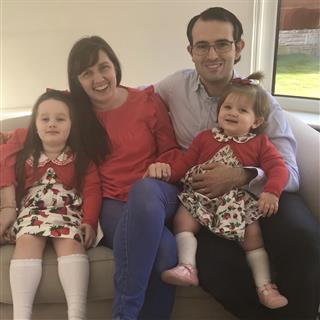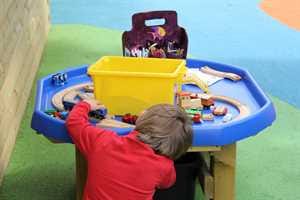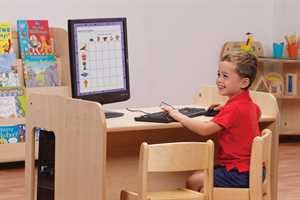
Children's Health
Physical Development- The Importance of Balance and Coordination
Balance is the ability to maintain a controlled body position during a task. This can involve sitting at a table to write, travelling along the balance beam or stepping across the blocks. To be able to function safely and effectively across different environments and during different everyday tasks children need to maintain controlled positions during both static (still) and dynamic (moving) activities.
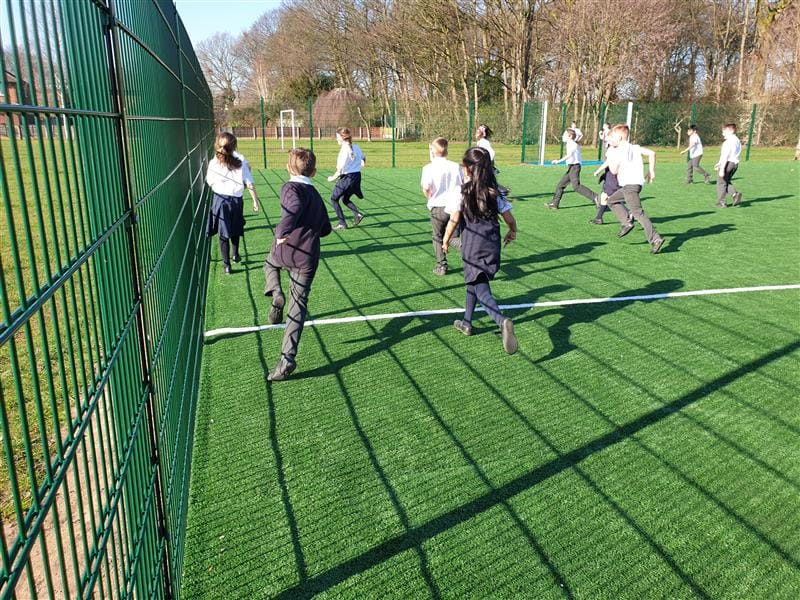
Children begin to develop their sense of balance from an early age when maintaining head control, crawling, bending down to the floor to pick up objects and eventually being able to walk and run on different surfaces. Balance is an important component of child development and relies on the vestibular system. Children learn to balance before they progress to other gross motor tasks such as conquering stairs, hopping, galloping or skipping.
Core strength allows children to maintain a steady body position when balancing and learning to coordinate their movements. EYFS guidance states that strong core strength and coordination supports children’s ability to communicate, learn language and eventually read and write.
Provision Opportunities for Refining Balance
As practitioners we want to create challenging, varied environments for our pupils which promote development of gross motor skills. It is useful for pupils to have access to different textures, gradients and surfaces when refining their sense of balance such as grass, woodchip, sand and mud.
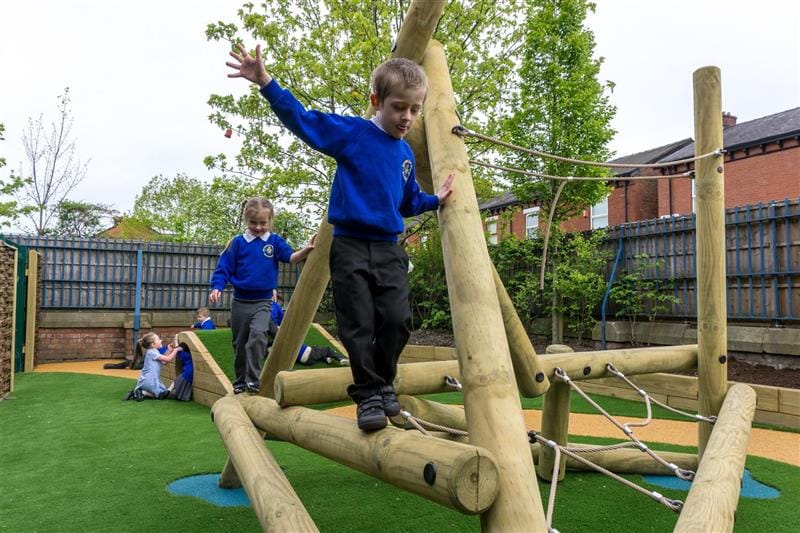
A sensory path can be created for barefoot walking which helps children to develop balance, proprioception and body awareness whilst also working fine motor muscles in the feet. Different materials and textures such as rope, grass, plastic, logs, pebbles, woodchip and paving stone can create a winding pathway within nature. Spending some time barefoot can help children to develop better control when running, climbing and playing.
Providing children with free access to moveable loose parts such as Play Builder sets and Get Set, Go! Blocks encourages pupils to communicate, negotiate space and build upon balance and communication through active play.
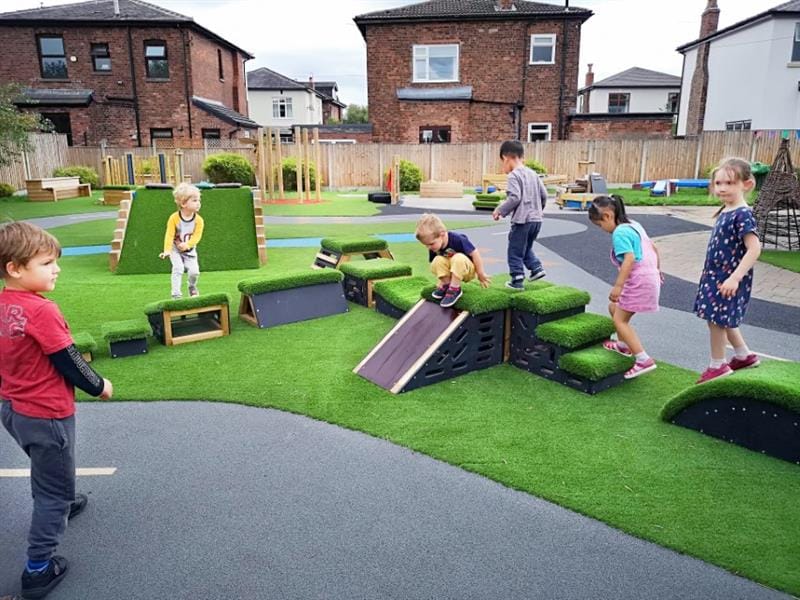
Pupils need to be given plenty of opportunities to refine and control their sense of balance. Provision needs to support children through static and dynamic balances.
Or, you could enhance your EYFS children's balance and coordination with the Rockies, a fantastic piece of play equipment that is sure to rock your playground! This modular play equipment provides children multiple opportunities to develop their physical and mental skills.
Static Balances – Pupils can start with simple balancing by standing momentarily on one foot. Children can practise balancing on alternate feet for three to five seconds and once confident can extend their time ensuring that their body remains upright.
Dynamic Balances – Balancing skills need to be built upon while combining movements. Moving through the Log Balance Weaver, stepping across Disc Poles and climbing up the Grip and Grasp Traverse offer plenty of opportunities for pupils to explore dynamic balances.
Trim Trails perfectly combine both static and dynamic balances as children create and perform sequences. Pupils can be supported to make and emphasise different body shapes when still or moving such as wide, narrow, twisted, bent, straight, round, symmetrical or asymmetrical.
Children perform the best balances by thinking about where their head is and where they are looking. Controlled breathing and extending arms can help to create a strong central line when perfecting balances. Pupils may like to test their control by balancing beanbags on different parts of their body or learning how to conquer a Tightrope Crossing. Yoga sessions introduce children to different poses which can improve balance, strength and endurance.
Playing simple games such as musical statues, hopscotch or bowling where recycled plastic bottles can be used for pins help to refine balancing skills. Floor markings such as snakes, wiggly lines, tracks in the form of footprints or spots which children can follow help to develop coordination and control over large movements.

Animal Walks
Animal walks provide compression and sensory input for joints and muscles. Proprioceptive and vestibular input can aid sensory regulation which can have a calming effect on pupils. Deep pressure also helps to strengthen children’s sense of balance and body awareness. Animal walks can be a great alternative to walking or running when using the daily mile track or when playing in the MUGA.
Crab: In a squatting position, pupils reach backwards with their arms and put both hands flat on the floor behind them. Head is raised and neck and body are in a straight line. Pupils can walk or run in this inverted position.
Monkey: Run or walk forwards with both hands on the floor and knees slightly bent.
Bunny: Pupils squat low on heels and place palms face down on the floor. As the hands move forward, bring the feet forward between the hands with a little jump.
Duck: Pupils bend their knees and place their hands around their ankles. They walk forward one foot at a time but remain in the knee bent position.
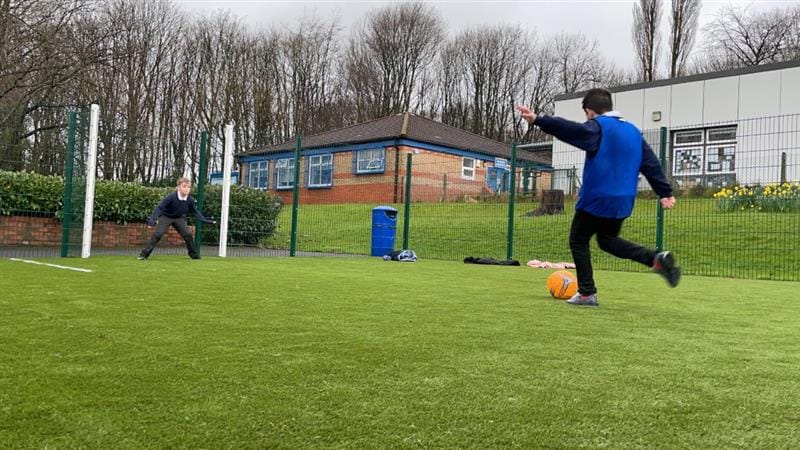
Trikes and Bikes
Vehicle play can really help to improve children’s gross motor skills. Getting on to vehicles involves balancing on one leg whilst swinging the other leg over. Moving forward and stopping requires muscle strength and coordination of movements. Fast movements and turning corners help children to develop postural control and balance as well as developing personal and social skills.
It is important to plan opportunities for pupils to travel across different levels and surfaces. Moving down a slight slope requires children to push, pull and lean with different parts of their body. Children also need to learn to navigate boundaries and space in their environment as they begin to practise road sense.
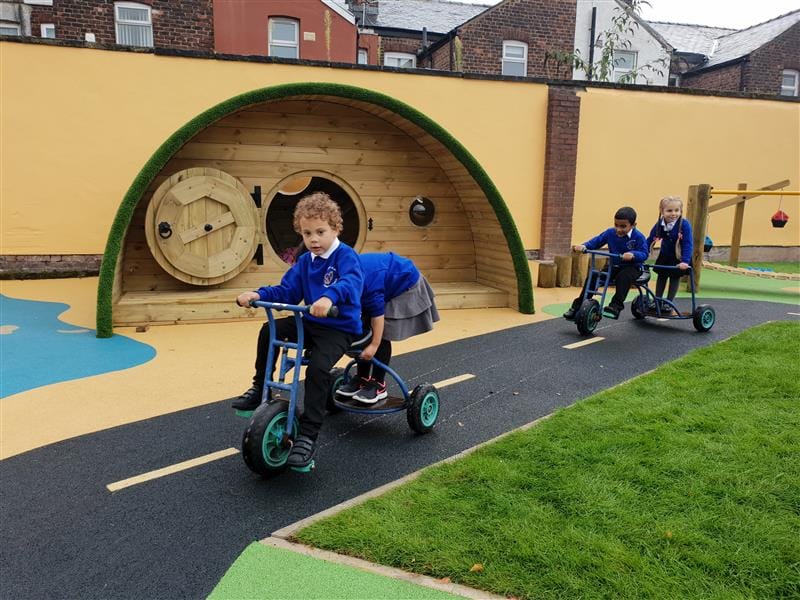
You can check pupils’ balance when using bikes and balance bikes ensuring that they sit with their weight over the saddle and have relaxed shoulders by performing the following exercises:
- Before riding, ask pupils to put feet firmly on the floor.
- Pupils to gently beat their chests like a gorilla imitating the teacher.
- Encourage pupils to have their heads up and to maintain teacher eye contact.
- Ask pupils to rest their hands on the handlebars with fingers over the breaks.
- Ask pupils to perform a two footed stamp with both feet of the ground. This can be done multiple times and will give pupils an experience of balancing on their bike without moving.
Climbing in the Outdoor Environment
Climbing is a thrilling and exciting activity for young children. When climbing, pupils feel ten foot tall as they see their surroundings from a totally different viewpoint. Climbing helps children to develop balance by engaging their core and large muscle groups.
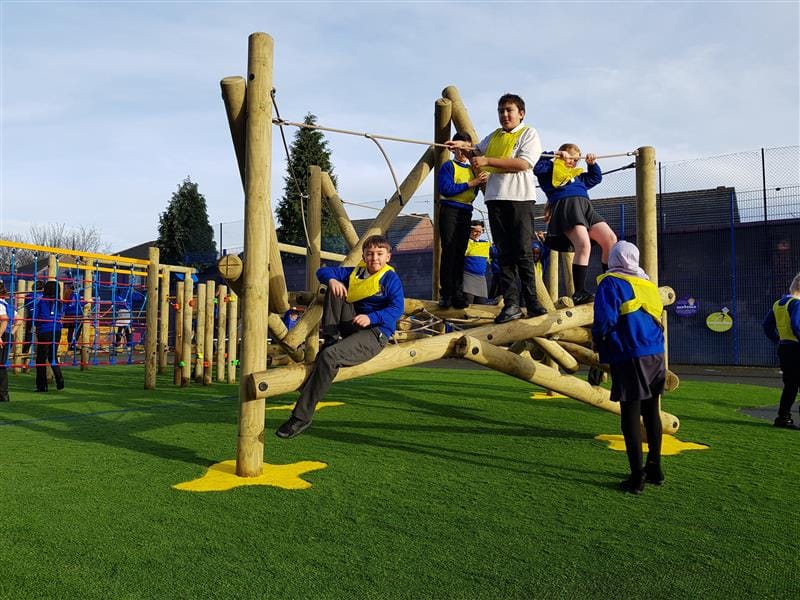
Pentagon’s range of Outdoor Climbers are designed to challenge pupils of all abilities with sloping beams, a variety of handholds and different widths and heights to cross in ever-changing weather conditions. Climbers also enhance imaginative play as pupils become intrepid explorers crossing over shark infested waters or elves and fairies living in forest treehouses.
Conquering a climber involves continuous problem solving and planning as children learn to navigate obstacles in their environment. Pupils stretch and make whole body movements when climbing which provides vestibular and proprioceptive input aiding balance and coordination.
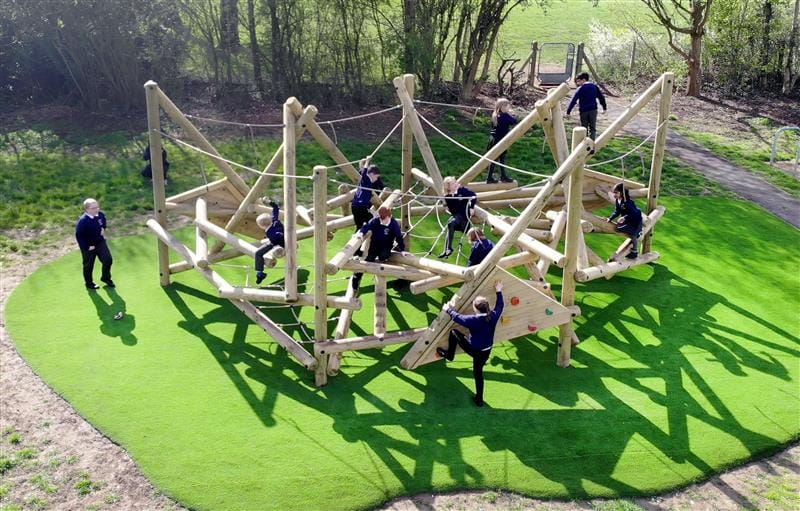
Pushing, Pulling, Lifting and Carrying!
When observing young children during play they often want to push, pull, lift and carry objects. Control, coordination and confidence improves as pupils develop their sense of proprioception. Proprioception involves having an awareness of your body and how it moves in a space. Like balance, a sense of proprioception requires opportunities for movement every day until children develop an internal sense.

Sensors in our muscles and joints register stretch and motion, sending information to the brain. When parts of our bodies are stretched, under tension or experience resistance or impact proprioceptors are stimulated helping pupils to become alert and respond.
Proprioceptive input throughout the day helps children to negotiate different environments, surfaces, people and objects, helping learners to be enthusiastic, focussed and ready to learn.
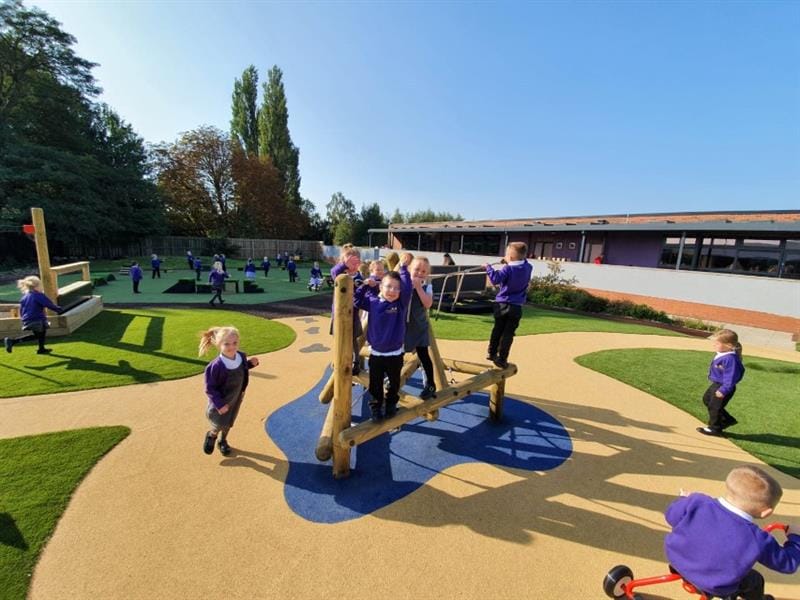
The proprioceptive sense can be developed as children push, pull, hang, leap, land, lift, carry, hit, throw and squeeze. Stretch and impact activities can involve:
- Digging in the sand pit
- Transporting using the rope and pulley materials mover
- Travelling using wheeled vehicles
- Carrying baskets/buckets/watering cans
- Moving wheelbarrows, carts and prams
- Hanging from Roll Over Bars
- Kicking balls
- Crawling through a tunnel
Having a strong sense of balance allows children to be able to move, control and manage their bodies well. Eventually balancing becomes automatic and unconscious, allowing pupils to focus their attention elsewhere.
Developing the vestibular sense is extremely important as it allows our bodies to detect motion and respond by providing balance. Twisting, turning, swinging, sliding, jumping and moving quickly are just some of the actions that activate neural connections needed to develop the vestibular sense. It can take many years for the vestibular sense to develop fully therefore opportunities for movement need to continue throughout childhood.
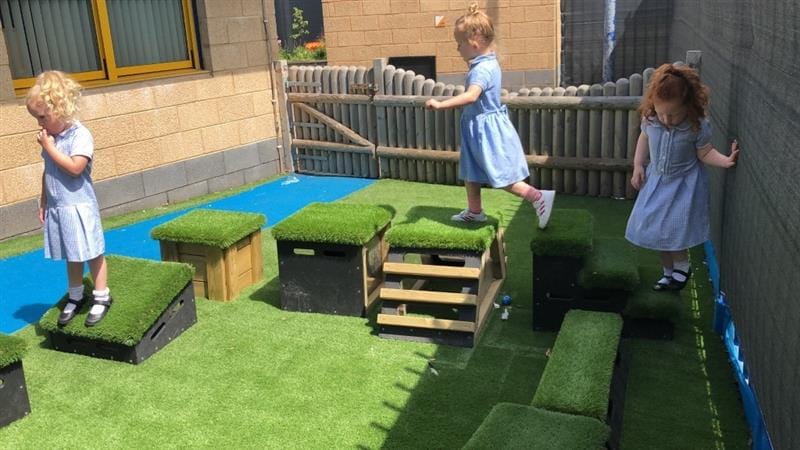
.jpg)
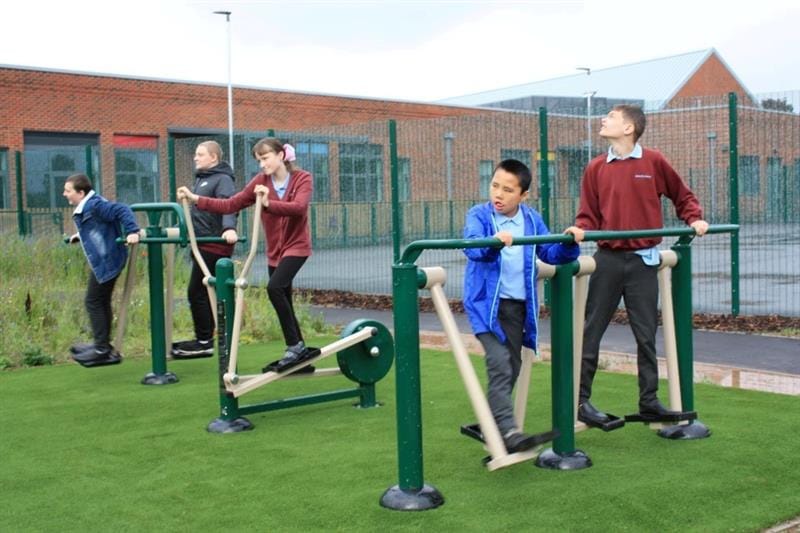
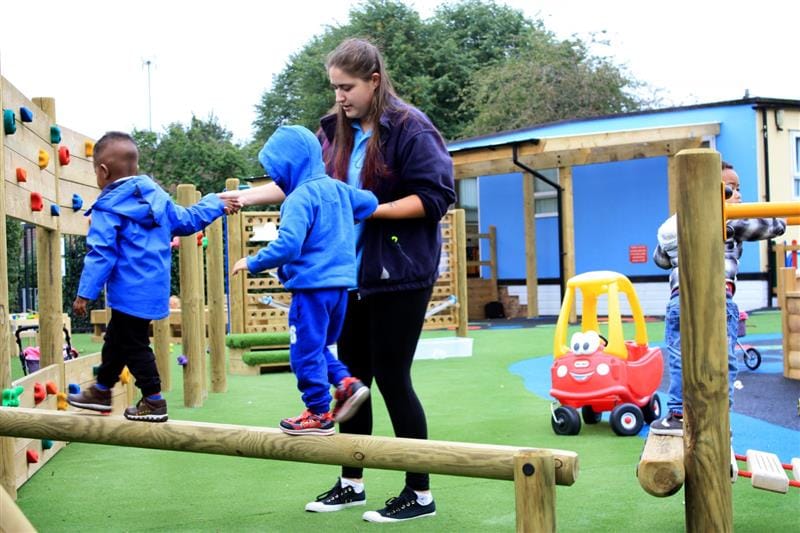
.JPG)
